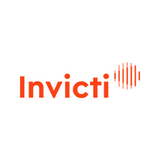Artificial Intelligence-as-a-Service (AIaaS) provides an efficient way for businesses to leverage AI and its power, advantages, tools, and technologies to eliminate the complexities and overcome the costs of developing in-house solutions.
Using AI tools and technologies, you can improve your products and services, automate time-consuming tasks, and enhance customer service.
If you want to create in-house solutions using traditional systems, it may incur huge upfront costs, and the process is also complex and long. This is why many businesses don’t prefer building in-house software solutions.
To this, AIaaS can be your savior. It will help you overcome these challenges and create advanced AI apps, from chatbots and monitoring tools to complex analytics software with cost-effectiveness and without requiring you to code.
In this article, I’ll discuss AIaaS, how it works, its benefits, and some of the best AIaaS providers.
Here we go!
What Is AIaaS?

Artificial Intelligence as a Service (AIaaS) is an everything-as-a-service (XaaS) concept that allows third-party companies and cloud providers to build AI-powered solutions and outsource them to businesses.
Businesses can use these AIaaS-based solutions to implement AI techniques and solutions to create advanced applications without manual coding and huge investment.
AIaaS works like other cloud-based services, providing AI products and services via an “as a service” model. It can help you effectively collect and store as much data as you want. AIaaS is easy to implement, enabling businesses and individuals to experiment with various public cloud platforms, machine learning algorithms, and services.
Through intuitive and low-code tools and APIs, users can harness the power of artificial intelligence without having coding knowledge.
AIaaS is a great solution for companies who are willing to develop, test, and use their own AI systems. So, without massive investment in resources and talent, you can gain valuable insights and opportunities to scale and grow.
Types of AIaaS Solutions

Different types of AI services that you can choose include:
Bots
An engaging chatbot can simulate conversations with humans when powdered by AI algorithms. It works by using the concept of ML and NLP, which helps understand user queries and provide appropriate solutions to them.
This requires a huge effort and advanced coding by developers to build successful chatbots.
AIaaS solutions help you create powerful chatbots to interact with customers smartly and provide faster and more effective issue resolution. It also helps reduce response rates and enhance customer satisfaction.
Application Programming Interface (API)
AIaaS solutions provide amazing APIs. By definition, APIs are like a bridge or intermediary where two applications can interact with each other and share data.
For example, a hotel booking website like Airbnb extracts data from different hotels’ sites and displays the best deals and prices in one convenient place.
Today, APIs are used in travel applications NLP, computer speech, computer vision, knowledge mapping, translation, search, emotion detection, etc.
So, if you want to build APIs, you can leverage AIaaS solutions without writing any code. The whole process will be automated and easier, so you can produce applications faster.
Machine Learning
Using AI and ML models, developers can create useful software, find patterns in data, streamline processes, and make predictions.
AIaaS makes it easier for businesses to adopt ML and AI. You can create pre-trained models for general usage or trained models to suit your specific use case. All this is possible without any ML expertise, which is a big advantage for many businesses.
Data Labeling
Data labeling means annotating a high volume of data in order to organize it effectively. It has multiple use cases, such as categorizing data by size, assuring data quality, and training AI.
Data labeling is done with the help of human-in-the-loop ML to enable machines as well as humans to continuously interact with one another. This way, AI can easily evaluate data and perform better in the future.
Data Classification
Data classification is used when you need to tag different sets of data under some categories. This usually includes user-based, context-based, and content-based data classification.

You can easily perform data classification with the use of AI, provided the outline and criteria of data classification are clearly defined. AIaaS can help you with this.
How Does AIaaS Work?
Unlike other “as a service” models like IaaS, PaaS, or SaaS, AIaaS provides AI-based solutions via a third-party vendor.
The architecture is quite simple that includes advanced hardware, software, and AI systems built to work with machine learning, NLP, computer vision, robotics, and more. It also involves ML models, frameworks, bots, etc.
Furthermore, AIaaS operates on cloud computing platforms that enable businesses to provide better services to their customers. This allows individuals and businesses to access AI features easily without maintaining or deploying costly infrastructure.
AI algorithms can mostly be of two types:
- ML algorithms that include regression and classification
- Deep Learning (DL) algorithms that employ neural nets
When algorithms are applied to a computer system in a certain way, it can act like a human by determining objects, carrying on conversations, responding to roadblocks, chatting with humans, and more.
Companies utilize the AIaaS model to gain valuable insights from collected and analyzed data. Thus, AIaaS helps businesses:
- Understand their valuable customers
- Find crucial points in service delivery and production
- Understand why some are buying a product/service while some are not
Components of AIaaS

#1. AI Infrastructure
AI infrastructure depends on AI and ML models. Compute and data are the two pillars of both models.
- AI compute: AI compute includes serverless computing, batch processing, and virtual machines (VMs). These methods are used to automate ML tasks and improve parallel processing. For example, the software XYZ has a real-time data processing engine that contains an ML library. Upon training the ML models, they can be used in containers and VMs to perform computations.
- AI data: When you put a large set of data into statistical algorithms, it is termed the functional ML model. In general, these models are designed to understand patterns in the existing data. The sheer volume of this data decides the accurate percentage of predictions. For example, multiple medical reports train DL networks to be used further in detecting medical emergencies like tumors or cancers.
ML relies on input data that you can gather from several sources. Data coming from unstructured data, relational databases, a pool of raw data, stored annotations, and more are the inputs for the AI and ML models.
Advanced machine learning techniques require performing complex computations that need a blend of CPUs and GPUs, and neural networks. Both CPUs and GPUs enable faster processing by complementing each other.
Cloud providers give a cluster of CPU-GPU combinations backed with virtual machines and containers in the AIaaS setup. Users can use this arrangement to train models.
#2. AI Services

Public cloud vendors offer APIs that are available and do not require custom ML models. These services extract advantages from the infrastructure that the cloud providers own.
- Custom computing: Even though APIs serve the primary purpose in general cases, cloud providers shift towards custom computing methods and allow users to meet cognitive computing via custom datasets. Here, users train cognitive services using their data. This custom approach minimizes the stress of choosing the right algorithms and training custom models.
- Cognitive computing: This computing includes text analytics, speech analytics, search, and voice translation. These services are used as REST endpoints and integrated with different applications with the help of an API call.
- Conversational AI: Cloud providers help developers integrate bots across the platforms by utilizing bot services. With this service, mobile and web developers can easily add digital assistants to their apps.
#3. AI Tools
Apart from infrastructure and APIs, cloud vendors offer tools to help developers and data scientists efficiently utilize storage, databases, and VMs since these are in sync with compute and data platforms.
- Wizards: Data scientists can utilize wizards to eliminate or minimize the complexity of training.
- Data preparation tools: The performance of AI tools highly depends on the data quality. And to have quality data and ML models, you need data preparation tools from cloud providers to transform, load, and extract data with ease. The output is then forwarded to the ML pipeline for evaluation and training purposes.
- Frameworks: Cloud providers can offer pre-made templates with several frameworks, such as Apache MXNet, Torch, TensorFlow, and more, since setting up and configuring the data-science environment is complicated.
Features of AIaaS

- Pre-trained models: AIaaS includes a wide range of pre-trained models that are trained on a vast array of datasets and optimized for required domains or tasks.
- Custom model development: AIaaS offers custom model development options that streamline the deployment and integration of AI capabilities.
- Data processing and analysis: With AIaaS, you can store and process data that enables your business to process and analyze large datasets.
- Model deployment and hosting: AIaaS helps you develop and deploy your AI and ML model easily without coding knowledge.
- API integration: AIaaS can be integrated with existing systems, workflows, and applications easily. Service providers offer APIs and SDKs to facilitate integration with famous frameworks and programming languages.
- Computer Vision Services: AIaaS offers computer vision services that help AI to analyze video and images.
- Predictive analytics: Predictive analytics is a vital feature for every business. AIaaS allows AI models to forecast future outcomes from large datasets.
- Automated machine learning: AIaaS offers automated ML features so that an AI model can handle repetitive and time-consuming tasks.
- Model monitoring and management: With AIaaS, you can easily monitor and manage your AI and ML models effectively. This also allows you to track the performance of these models.
AIaaS vs. AIPaaS
AIaaS and AIPaaS are cloud-based solutions that you can use while developing and deploying AI-based solutions. However, both are different in terms of scope and functionality.

AI-as-a-Service (AIaaS) is a cloud-based solution that offers pre-built AI applications and models that can be integrated easily into existing business applications and processes.
It provides pre-built models for different operations, such as image recognition, predictive analysis, and natural language processing. This can be accessible via APIs so that developers can integrate them easily into their applications.
On the other hand, AI Platform as a Service (AIPaaS) is a cloud-based solution that allows data scientists and developers to use the resources and tools in order to design, train, analyze, and deploy AI models. It includes software development kits, machine learning frameworks, APIs, and other development tools.
Benefits of AIaaS

- Advanced infrastructure: Successful AI and ML need GPUs and parallel machines. Without AIaaS, a company might have to make heavy initial investments. AIaaS helps businesses harness ML’s power at lower costs and risks.
- Usability: Implementing AIaaS is easy; you can create out-of-the-box solutions to benefit from the power of AI without having deep technical skills.
- Requires little to no coding: You can use AIaaS even if your organization lacks an in-house team of coding experts. All you need is a no-code infrastructure in your company, without requiring any coding during setup or usage.
- Scalability: With AIaaS, you can start with easy projects to understand and learn if this fits your individual needs. As you become experienced in your own data, you can scale up and down as your project demands change.
- Cost-effective: Implementing AIaaS brings cost-effectiveness. You only need to pay for the functionalities you use with no upfront or hidden investment.
Use Cases of AIaaS

- Image recognition: Image recognition systems detect images and identify places, objects, and people to draw conclusions. With AIaaS, you can build AI-powered image recognition applications easily.
- Detecting fraud: AI systems help detect unauthorized activities and prevent fraud.
- Autonomous vehicles: Autonomous vehicles enhance safety. You can use this technology in vehicles and allow them to see, sense, and figure out their surroundings.
- Natural Language Processing: This system uses computer-generated text and speech. They can interact with customers to enhance customer experience in real-time.
- Recommendation engine: This suggests the relevant items according to your customer needs based on preferences and patterns.
- Analytics: AIaaS is highly helpful in analytics as it can help you analyze huge data volumes, find patterns, make assertions, and predict the future.
AI-as-a-Service Providers
#1. Amazon Web Services (AWS) Machine Learning
Get a comprehensive set of AL and ML services with AWS Machine Learning and innovate faster. Gain insights from the data you have while lowering the costs. AWS ML helps you in your ML adoption journey with implementation and infrastructure resources.
AWS ML enables you to solve your business problems, build new apps with the help of generative AI, address business problems, improve customer experience, accelerate innovation, optimize business processes, and more.
#2. Microsoft Azure Machine Learning
Experience enterprise-grade AI services for your end-to-end ML lifecycle with Microsoft Azure Machine Learning. It helps you build, deploy, and manage critical business ML models at scale with confidence. It accelerates time-to-value with ML operations, integrated tools, and open-source interoperability.

This AI learning platform is specifically designed for responsible AI apps in ML. Microsoft Azure ML helps you deploy quick ML models, manage, and share them for MLOps and cross-workspace. It has built-in security, compliance, and governance. It also offers AI workflow orchestration, world-class performance, flexible frameworks, and tools, and managed end-to-end platform.
#3. Google Cloud Platform (GCP) AI Platform
Google Cloud Platform offers innovative AI and ML products, services, and solutions powered by Google’s technology and research. You can build generative AI apps efficiently, generate insights, and discover frameworks and tools.
With the GCP AI platform, you can build AI applications responsibly and quickly. In addition, gain insights from the data with its entire suite of data analytics, management, and ML tools. It allows you to understand and interpret your ML models.
#4. IBM Watson
Unlock new levels of success and productivity with IBM Watson and infuse automation and AI into your business workflows. It is the enterprise-ready and next-generation AI platform designed to enhance the effectiveness of AI in your business.

It offers:
- watsonx.ai: It helps you train, tune, validate, and deploy ML models with ease.
- watsonx.data: It helps you scale AI workloads anywhere for all the data.
- watsonx.governance: This allows you to accelerate responsible, explainable, and transparent AI workflows.
Conclusion
AIaaS being a rapidly growing technology, has numerous benefits for early adopters. AIaaS optimizes your business processes and allows you to develop and deploy AI and ML models with ease without any prior coding knowledge.
So, if you want to create and deploy a low-cost cloud-based solution, you can use a good AIaaS solution like the above. It will help you design an advanced AI model to perform various tasks and streamline the overall process with efficiency and cost-effectiveness.
You may also read Security as a Service (SECaaS).

















